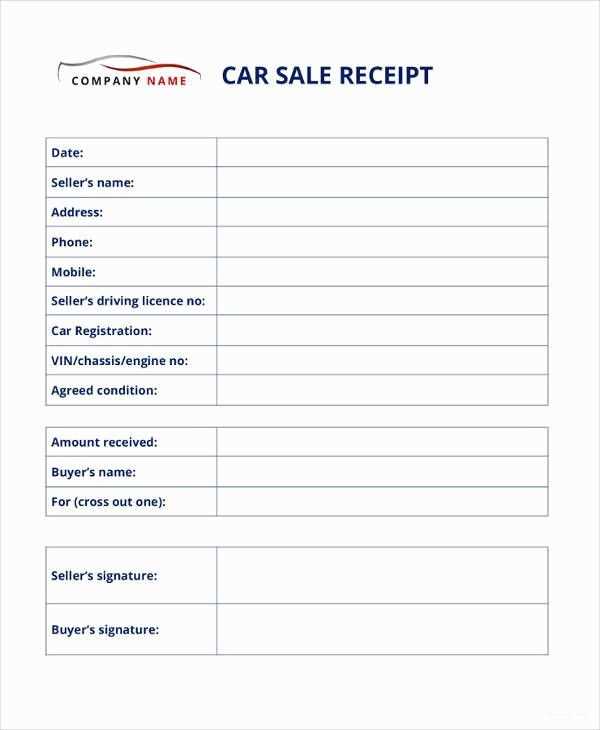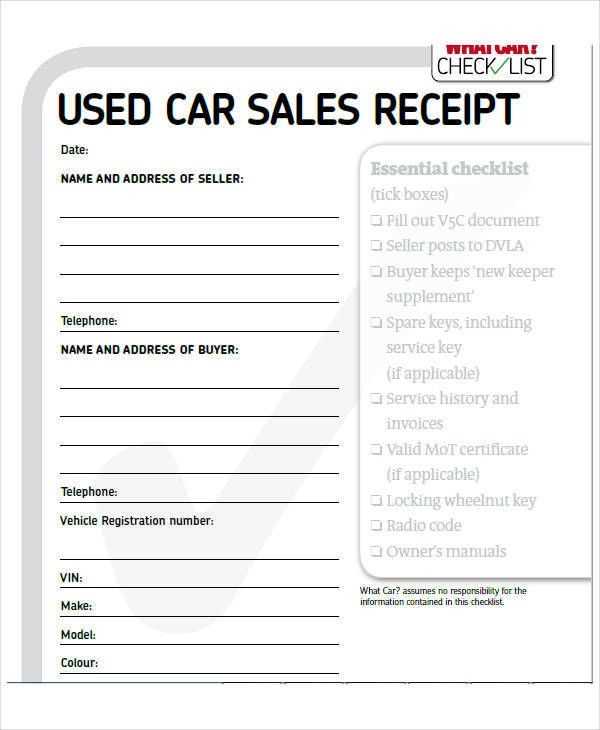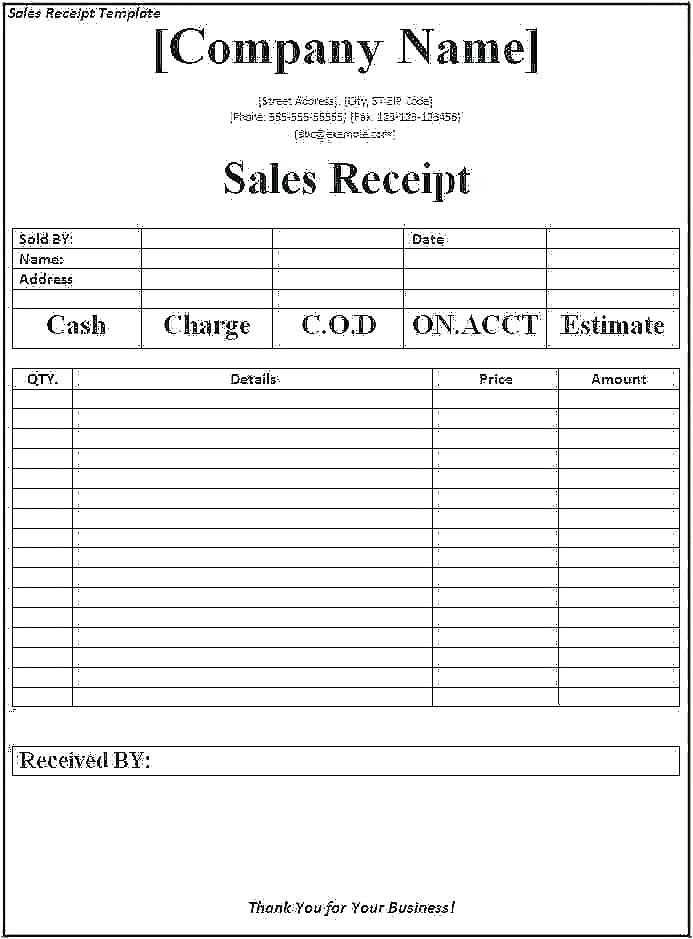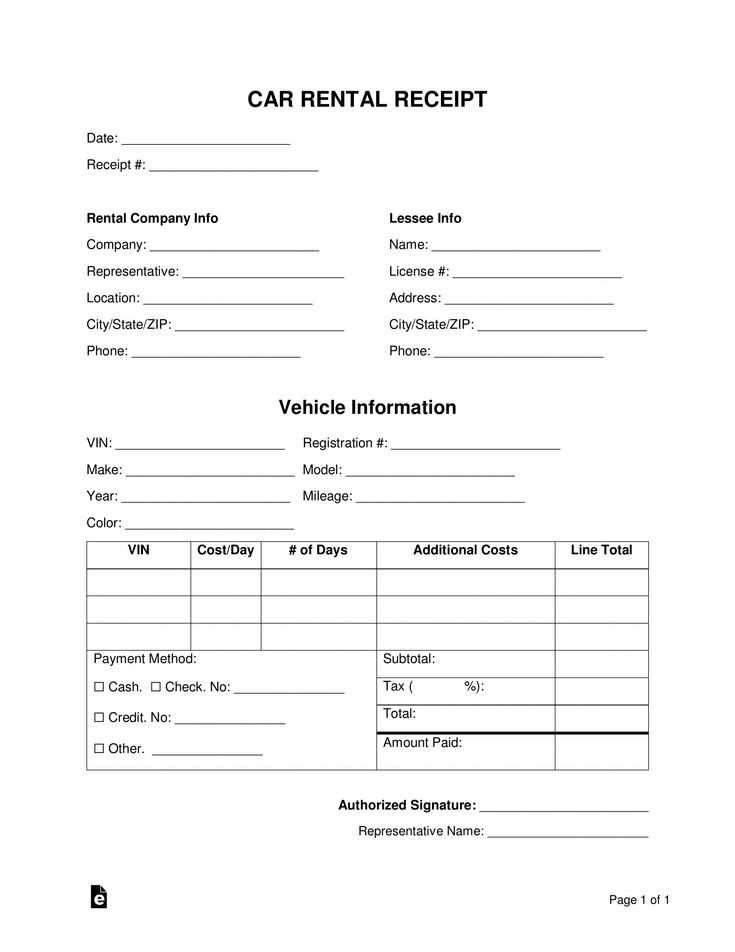
A well-structured car sale receipt protects both buyer and seller by documenting key transaction details. It should include names, contact information, vehicle specifics, and the agreed-upon price. Adding a clause confirming the vehicle’s condition at the time of sale can help prevent future disputes.
To keep things simple, use a clear format with labeled sections for each piece of information. A receipt should specify the vehicle make, model, year, VIN, and mileage. Payment details, including amount, method, and date, should be clearly recorded. If the sale is “as is,” state it explicitly to clarify that no warranties apply.
Both parties should sign and date the receipt, with each keeping a copy for reference. If required by local regulations, notarization may add an extra layer of security. A properly documented sale provides legal protection and ensures a smooth ownership transfer.
Basic Car Sale Receipt Template

A well-structured car sale receipt protects both buyer and seller by documenting key details of the transaction. The document should clearly outline the vehicle’s make, model, year, and VIN, ensuring there is no confusion about the specific car being sold.
Key Information to Include
List the names and contact details of both parties, along with the agreed sale price. Specify the payment method and indicate whether the amount was paid in full or if any balance remains. If applicable, include a note stating that the vehicle is sold “as-is” to avoid future disputes.
Signature and Date

Both buyer and seller should sign and date the receipt. This step confirms mutual agreement on the transaction terms and adds legal weight to the document. Providing copies to both parties ensures everyone retains proof of the sale.
Key Elements to Include in the Receipt
List the full names and addresses of both buyer and seller. This ensures clarity on who is involved in the transaction and provides a reference for any future inquiries.
Vehicle Details

Include the make, model, year, Vehicle Identification Number (VIN), and current mileage. These specifics confirm the identity of the vehicle being sold and help prevent disputes.
Payment Information
State the total sale price, payment method, and date of transaction. If a deposit was made, mention the amount and balance due, if applicable.
Indicate whether the vehicle is sold “as is” or with any warranties. If additional agreements exist, such as included accessories or pending repairs, document them clearly.
Both parties must sign and date the receipt. This serves as proof of agreement and completion of the sale.
How to Structure the Document Properly
Begin with a clear title that specifies the purpose of the document, such as “Vehicle Sale Receipt.” This ensures both parties immediately understand its function.
Include the date of sale at the top. This provides a reference point for legal and financial records.
List the seller’s and buyer’s full names, addresses, and contact details. Accuracy in this section prevents disputes and simplifies future correspondence.
Specify the vehicle’s details: make, model, year, color, VIN, and mileage. Double-check these entries to avoid discrepancies.
Clearly state the sale price in both numeric and written form to eliminate confusion. If payment terms apply, outline them explicitly.
Add a section for any warranties or disclaimers. If the vehicle is sold “as-is,” include that phrase to clarify the buyer’s responsibility.
Provide space for both parties’ signatures. This final step legally validates the agreement.
Legal Considerations and Best Practices

Include a clear statement that the vehicle is sold “as-is” unless a warranty is explicitly provided. This protects the seller from future claims regarding defects or repairs.
- Verify Identification: Ensure both buyer and seller provide valid identification. Match the names on the ID with those on the title to prevent fraud.
- Title Transfer: Complete the title transfer immediately. Delayed transfers can leave the seller liable for traffic violations or accidents involving the vehicle.
- Payment Security: Accept payment in a traceable form, such as a cashier’s check or bank transfer. Avoid personal checks unless verified with the issuing bank.
- Odometer Disclosure: Record the exact mileage on the receipt. Many states require an odometer disclosure statement to prevent fraud.
- Bill of Sale Requirements: Include the full names of both parties, date of sale, purchase price, vehicle details (make, model, year, VIN), and signatures. Some states require notarization.
- Release of Liability: Submit a notice of sale or release of liability form to the local motor vehicle department. This prevents legal responsibility for incidents after the sale.
- Sales Tax Obligations: Some states require private sellers to collect and report sales tax. Check local regulations to ensure compliance.
Following these steps reduces legal risks and ensures a smooth transaction for both parties.


